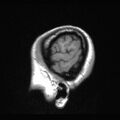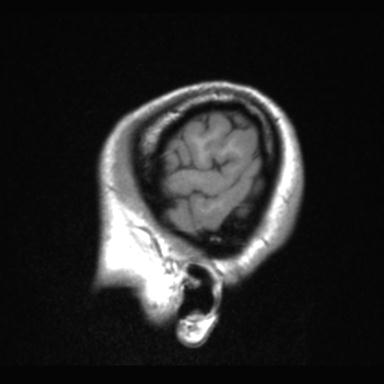File:Atretic encephalocoele with inferior vermis hypoplasia (Radiopaedia 30443-31108 Sagittal T1 5).jpg
Jump to navigation
Jump to search
Atretic_encephalocoele_with_inferior_vermis_hypoplasia_(Radiopaedia_30443-31108_Sagittal_T1_5).jpg (384 × 384 pixels, file size: 10 KB, MIME type: image/jpeg)
Summary:
| Description |
|
| Date | Published: 11th Aug 2014 |
| Source | https://radiopaedia.org/cases/atretic-encephalocoele-with-inferior-vermis-hypoplasia |
| Author | Paul Simkin |
| Permission (Permission-reusing-text) |
http://creativecommons.org/licenses/by-nc-sa/3.0/ |
Licensing:
Attribution-NonCommercial-ShareAlike 3.0 Unported (CC BY-NC-SA 3.0)
File history
Click on a date/time to view the file as it appeared at that time.
| Date/Time | Thumbnail | Dimensions | User | Comment | |
|---|---|---|---|---|---|
| current | 09:06, 29 May 2021 |  | 384 × 384 (10 KB) | Fæ (talk | contribs) | Radiopaedia project rID:30443 (batch #3167-534 F5) |
You cannot overwrite this file.
File usage
The following page uses this file:
